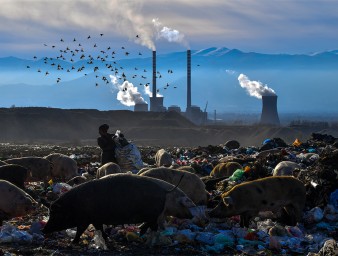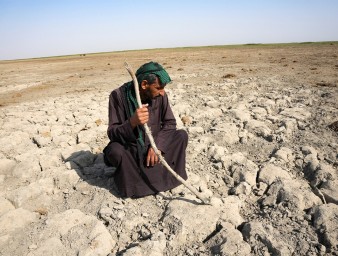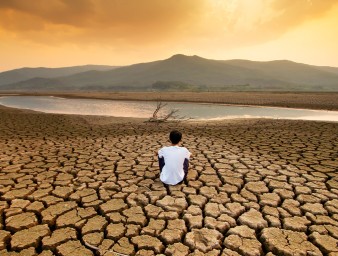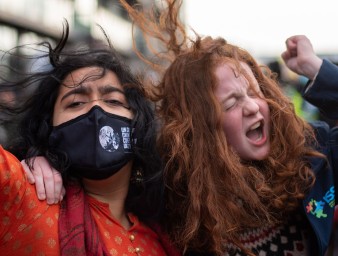“We have no choice but to keep going”: environmental activism in Kenya
06 June 2018

“We have been fighting for justice, but we have not accessed justice,” said Anastacia Nambo an environmental human rights activist from Kenya. “It has forced us to live like refugees. We do not sleep in our houses because of the threats to our lives. And yet still we are sick.”
In May, Nambo, who is a member of the Center for Justice Governance and Environmental Action (CJGEA) was attacked, her eyes sprayed with a caustic substance, which caused them to swell and go red. She is still dealing with the effects.
Nambo, along with several other environmental human rights campaigners, were attacked because of their on-going court case against a local smelter accused of polluting the small urban community of Owino Uhuru, in Mombasa, with lead.
The smelter extracted lead from used car batteries. In the process, it emitted fumes laden with lead and spewed untreated acid wastewater into streams where people bathed. Lead is a potent neurotoxin. It damages the development of children, targeting the brain and nervous system.
“Lead is still in the soil, still in the water, in the trees, leaves, the vegetables that people plant are less,” said Phyllis Omido, executive director of CJGEA. “There has been no access to remediation for the community, treatment for children. The issue is not over. We have no choice. We have to keep going until something is done.”
For nearly a decade Omido and other community activists have fought the presence and effects of lead in the community. CJGEA was founded as a way to better organize to fight this and other environmental causes, she said.
The group staged protests, wrote letters and handed complaints -- written and verbal -- to environmental officials of the local and national government, all in an effort to shut down the plant and to obtain remedy for those who have been affected by the lead.
In 2014, the plant eventually ended operations, but the damage, in high levels of lead recorded in the community, remained.
Yet, for their efforts, Omido and other activists have been regularly targeted with violence and intimidation. Homes of activists have been broken into, activists have been attacked. Omido herself was jailed, accused of inciting violence. The child of one activist was kidnapped and held for three days. So far, no one has been held responsible for any of the attacks.
As a result, many in the community have fled their homes, Omido said. She no longer lives in Mombasa, and knows of others who move homes regularly to avoid harassment.
“We have not seen justice,” Omido said. “Even though we stopped the source of the pollution, the community as a whole is still polluted because lead has a long shelf life.”
Kenya does have the laws to support environmental rights. The Kenyan Constitution does recognize the right to a clean and healthy environment. Last year, the Government banned the use of plastic bags. The Government is also at the forefront in efforts to develop an action plan on policy on business and human rights, which should address some of the concerns raised by environmental human rights defenders, said UN Human Rights Officer Marcella Favretto.
“The pollution suffered by the small urban community of Owino Uhuru and the attacks against environmental activists seeking justice for environmental pollution in their community is a reminder that Kenya needs to redouble its efforts to ensure the full realisation of environmental rights in the country,” she said. “The Government can count on the continuous support of OHCHR.”
For Omido and others, the support of the UN Human Rights Office and experts has been key to their continued ability to fight. The group has worked with the UN Human Rights Office and UN experts on the issue. A meeting with UN Special Rapporteur on human rights and the environment John Knox, lead to the expert championing their cause, she said.
For example, when Nambo and other activists were attacked in May, Knox, along with two other UN human rights experts, issued a statement urging the Kenyan government to better protect the human rights defenders. “It is unacceptable that they are repeatedly threatened, harassed, intimidated and assaulted and no one has been held accountable,” the statement read.
Omido said the power of statements such as this from the UN Human Rights Office cannot be underestimated.
“I am alive and (the child) not killed by kidnappers because of OHCHR,” Omido said. “Ever since (meeting with John Knox) when we experience an attack, OHCHR engaged with government or released a statement, urging the government to investigate. We know this might see like just statements, but we know the impact because we have felt them immediately. As soon as a statement comes from OHCHR, the government contacts us.”
Omido, along with other environmental human rights defenders are taking part in a workshop organized by the UN Human Rights Office in Kenya. The meetings provide a chance for activists to learn more about national and international human rights mechanisms and how they use them in the pursuit of justice. Omido said the meeting has been a great chance to meet with and learn from other environmental human rights defenders and more about the UN and how it can help their cause.
But it’s not enough.
“We still have not seen justice,” she said. “We are still very much in need of more efforts in protecting environmental human rights defenders and the issues we are raising. This is a good beginning, but not yet where we want to go.”
6 June 2018




